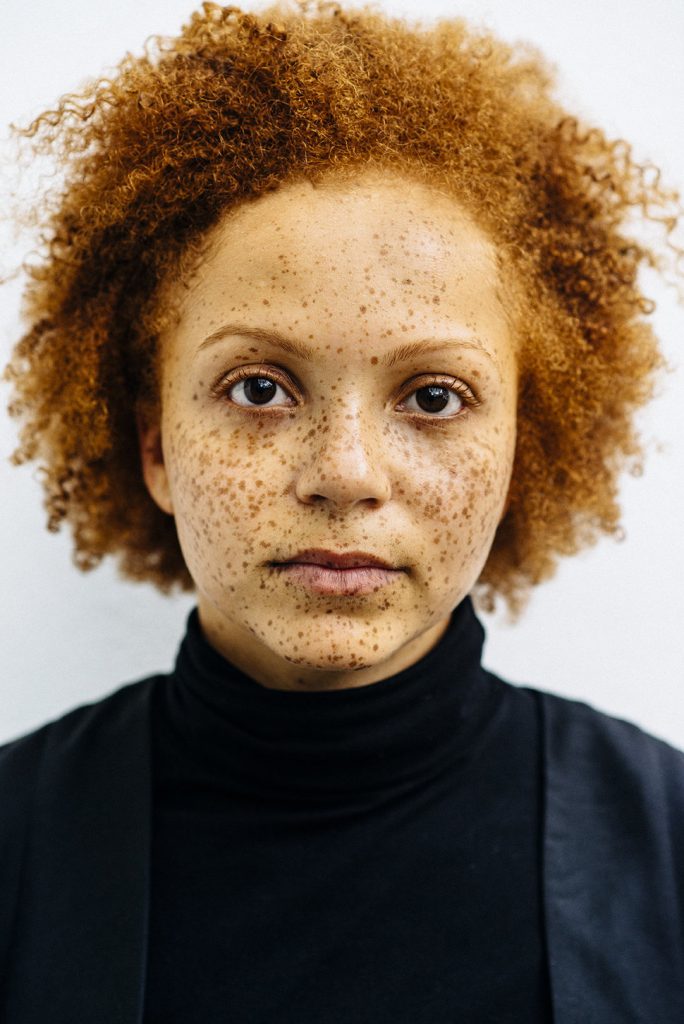Do Melungeon People Have Red Hair?
Table Of Content

Goins estimates there must be several thousand descendants of the historical Melungeons alive today, but the study only examined unbroken male and female lines. Among them were the Montauks, the Mantinecocks, Van Guilders, the Clappers, the Shinnecocks and others in New York. Pennsylvania had the Pools; North Carolina the Lumbees, Waccamaws and Haliwas and South Carolina the Redbones, Buckheads, Yellowhammers, Creels and others. In Louisiana, which somewhat resembled a Latin American nation with its racial mixing, there were Creoles of the Cane River region and the Redbones of western Louisiana, among others. In order to conduct the larger DNA study, Goins and his fellow researchers — who are genealogists but not academics — had to define who was a Melungeon. But Smallwood wants people to know that Melungeons are part of what made America.
Records[edit edit source]

"People migrated looking for better land. One of my theories is that perhaps we followed Daniel Boone's route through the Cumberland Gap. We went straight up what's now I-26 to Vardy," Overbay said. At age 12, Winkler learned his father's family hailed from Hancock County and had Melungeon roots, fueling his lifelong fascination and academic career with the community. "She didn't want me to know about Melungeons," Overbay, 73, recalled. "In my mother's family, they said we were 'Portugee,' That's what they called Portuguese."
Melungeon Red Hair: Unraveling the Genetic Mysteries of Appalachia
Although initially pejorative in character,[7] this word has been reclaimed by members of the community.[8] The spelling of the term varied widely, as was common for words and names at the time. This section examines the role of red hair in the cultural identity of the Melungeon community and its influence on social interactions, including experiences of discrimination and legal challenges faced by the community. When it comes to the Melungeon people, one of the most striking physical traits is their red hair. This vibrant hair color has fascinated researchers and genealogists for years, leading to a deeper investigation into the .
ABOUT FAMILY TREE
"I always heard growing up that we were Anglo-Saxon and Celtic here in the mountains, so the most fascinating thing for me is realizing that we are here in the mountains really a melting pot of the entire world," Alther says. And it's very likely that the native lines did come through the females. And these families - all of the families with African heritage on the male side go back to Louisa County, Virginia, and so this add mixture occurred very early. We did some testing there and we found that to be all European of the people that we tested. A Spanish influence is likely, given that the Southwest and the mountains were explored and settled.
They are indeed a mixture, coming from European, North American Indian and light-skinned sub-Saharan African backgrounds. Some sources add Turkish, Moorish, Arabic and Jewish to the mixture. In other words, they are hybrids with many more components than most of us have. This is all the result of intermarriage within their own community, although nowadays many are “marrying white” which will further complicate their family trees and their DNA.
What do you know about Melungeons?
Yet despite this conviction — one which she found validated by various Melungeons she spoke with — many people have never stopped trying to pinpoint a firmer genetic source of Melungeons. With the advances of modern technology, this fascination has taken on a new form. In conclusion, Norman Chapman’s impact on the field of economics and his dedication to education and research are undeniable. Chapman’s legacy can also be seen in the way he approached the role of the artist in society. He was known for his activism and used his art as a platform to address social and political issues. This has encouraged many modern artists to use their work as a means of sparking conversation and effecting change.
‘Demon Copperhead’: Barbara Kingsolver’s Appalachian Elegy, Hillbillies Not Included - The New York Times
‘Demon Copperhead’: Barbara Kingsolver’s Appalachian Elegy, Hillbillies Not Included.
Posted: Tue, 22 Nov 2022 08:00:00 GMT [source]
"To be able to stand up in front of a group of people and say that I'm the descendent of a Melungeon—a term full of baggage that my grandmother was taught to keep quiet about—I'm content with that." Moreover, when looking at genes, one is rarely looking only at genes. We often think of genes as if they were master switches—flick them one way and you get blue eyes; flick them another and you get brown. But genes can be influenced by many factors, including other genes, noncoding DNA, epigenetic markers, and chemical changes in the cell.
Word History and Origins
Most Modern Melungeons share autosomal DNA, making them cousins to one another — sometimes double-cousins. For many years it was believed that they were a mix of African, North European and Native American, but recent DNA studies — along with exhaustive genealogical research — have shown that Melungeons are a mix of many different races. Depending on the family, a modern Melungeon person may have any combination of West African, North African, South Asian, West Asian, East Asian, Native American, Mesoamerican, Jewish and (very)broadly European DNA. However, DNA studies didn’t always exist, and so Melungeons have been referred to as many different things over the course of America’s history. There are a lot of different ways that Melungeon people have been described over the years.
Their distinctive hair color serves as a point of reference for tracing back their genealogical pathways and provides insight into how cultural identities formed in isolated regions. Our Silk Press Straight hair extensions are lightly textured straight hair with medium luster and coarse hair strands. This texture is best for straight looks and perfect for blunt cut hair styles.
It does seem like if you’re of Melungeon descent, many believe that you might be more likely to have red hair. As said earlier, yes, Melungeon people can indeed possibly have red or auburn hair in the modern day. If this is the case, it would also be likely that the individual will have fair skin. Even though these traits seem quite opposite from what the Melungeons are described as in many reports and publications, it’s always important that we keep things like DNA and genetics in mind. According to one publication, Melungeon people aren’t technically a specific group.
Gone are the days you have to sacrifice body and movement for texture. Our Coarse Kinky Straight clip-in extensions are lightweight and made to blend seamlessly with 4c hair when blown out. At one time, the word was used as a racial epithet against a mulatto, at another time as a political epithet for east Tennessee Republicans. The common usage of the term had an element of socio-economic status attached to it; families who were financially successful were not necessarily considered Melungeon, no matter who their ancestors were. The Melungeons live in the Cumberland Gap, eastern Tennessee, southern Virginia and eastern Kentucky. They are of such mixed heritage that the name comes from the French word melange which means mixture.
Many found themselves defending their freedoms in court to prove that they were not hiding secret African ancestry, to try to get out of the bonds of slavery. Most claimed Portuguese ancestry to explain-away their darker complexions and features. Thus began the long, uphill battle to be identified as “white,” when the truth of the matter was far more complex than that. In the mountains of Virginia and other Appalachian states, mixed race people have long eked out a living while questions about their intriguing origins have persisted. In 2012, independent researchers released results of the most comprehensive DNA analysis of Melungeons to date. The subjects were all descendants of those who were identified as Melungeon in 19th- and early-20th-century records.
Mom's DNA test reveals previously unknown genetic connection to Northeast Tennessee - Kingsport Times News
Mom's DNA test reveals previously unknown genetic connection to Northeast Tennessee.
Posted: Fri, 19 Oct 2018 07:00:00 GMT [source]
Chapman’s work continues to be an important influence in the art world, inspiring artists to push the limits of what is possible.
This pathfinder contains general history, cultural studies, linguistic studies, genetic studies, fiction, and nonfiction works about the Melungeons. If we knew exactly which genes code for traits such as shovel-shaped teeth, it could help piece together the Melungeons' history. Simple traits that are shaped by one or a few genes are easy to identify—the moistness of one's earwax, for example, can be linked to a single base within a single gene. Many traits, such as height, are polygenic, however, determined by multiple, perhaps even hundreds of genes. Taking on the idea of our more distant ancestry illuminates how the vast forces that shaped the history of the world shaped us and our families as well. While there may be comfort in finding one's place in a big family tree of somewhat similar people, there is disorientation too.
Most Melungeons in Hancock County look very much like their “white” neighbors, many of whom are quite swarthy from a lifetime of outdoor work. More recent theories have proposed that the Melungeons descended from Mediterranean or Middle Eastern ancestors. The Melungeon Heritage Association says thousands of people have discovered family connections to the Melungeon's through genealogical research. Melungeon's were first documented in southwest Virginia and northeast Tennessee in the 19th century. "They are basically a mixed-ethnic group of a combination of Native American, European American and African American," Winkler says.
Comments
Post a Comment